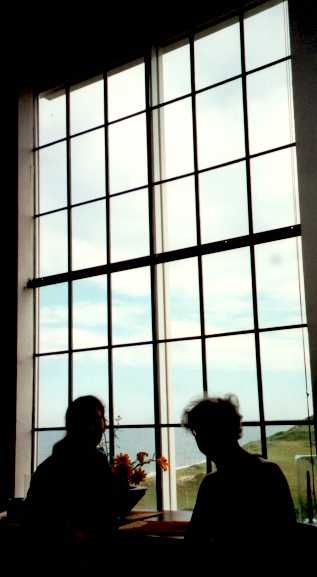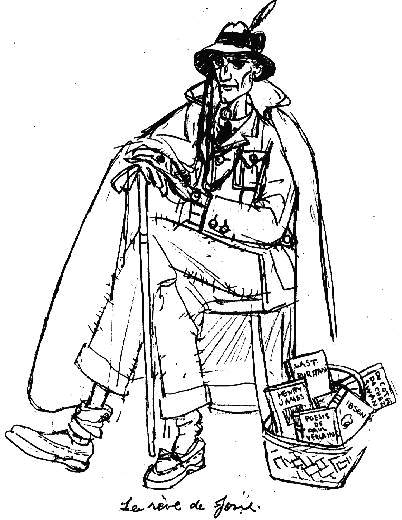
Edward
Hopper
An
Intimate Biography
by
Gail
Levin
(Alfred
A. Knopf 1995)
"This
book is joyfully dedicated to my husband, John Babcock Van Sickle, who
deserves credit not only for his unflagging interest and enthusiasm, but
for his unique contributions which have been collaborative in the best
sense. He has supplied remarkable insights at every level, literary acumen,
translations, editorial improvements, and above all, good cheer at sharing
our home with the Hoppers for so many years." GL
In
the art of Edward Hopper (1882-1967), tense, unhappy men and women, in
whom we recognize something of our neighbors and ourselves, play out mysterious
dramas in silent, stripped-down spaces--stages raked by an unrelenting
and revealing light. These paintings, and Hopper's equally evocative landscapes
and houses, make us wonder: what kind of man had this haunting vision,
and what kind of life engendered this art?
No
one is better qualified to answer these questions that the art historian
Gail Levin, author of the major studies of Hopper's work (including the
catalogue raisonnÿea) and curator of many exhibitions that explored
his development and cultural context. Delving deeply into his art and into
a rich archive of unpublished letters and diaries, she now constructs "An
Intimate Biography," which reveals the true nature and personality of the
man himself--and of the woman who shared his life and helped to shape his
art.
Hopper
came from a middle-class family in the Hudson River town of Nyack, New
York. An early gift for drawing freed him from the maternal apron strings
to study art in New York City, and then to paint in Paris. There he conceived
an abiding love for French culture, enjoyed a brush with romance, and recorded
in impressionistic paintings his passion for the City of Light. Alas, these
paintings were not to the taste of the America to which he returned; and
for many years the success won early by his art school contemporaries such
as George Bellows quite eluded Hopper. For more than a decade he had to
eke out a living as an illustrator for advertising and popular fiction--an
occupation he detested.
The
turning point came when, already past forty, he married the artist Josephine
Nivison (1883-1968), who gave new impulse to his painting. For forty-three,
Jo and and Edward lived out a love-hate relationship that was passionate,
at times violent,  and
utterly symbiotic. Deeply divided by temperamen--Jo was as vivacious, outgoing,
and talkative as Edward was dour, repressed, and taciturn--and by his wounding
contempt for her artistic ambitions, they nonetheless shared a deep love
for French poetry and world literature, and for the plays and movies that
came to resonate so powerfully in his art.
and
utterly symbiotic. Deeply divided by temperamen--Jo was as vivacious, outgoing,
and talkative as Edward was dour, repressed, and taciturn--and by his wounding
contempt for her artistic ambitions, they nonetheless shared a deep love
for French poetry and world literature, and for the plays and movies that
came to resonate so powerfully in his art.
Edward's
career dominated the marriage. Jo's needs--artistic, social, and sexual--were
habitually frustrated. She adored and despised him, served as his model
and inspiration, secretary and domestic, even as she resented his selfishness
and arrogance. And she wrote it all down. Not only the storms of the kitchen,
sitting room, and bedroom, but also every trip to the theater or cinema,
every book they read together, and every step in the creation of many a
famous painting was recorded by Jo in diaries that give a unique vantage
point to this biography: Jo's writings cast an entirely new light on our
understanding of Hopper's creativity and the passions and conflicts from
which it stems.
Jo
Hopper's diaries permit an intimate look at the interactions of an indissolubly
bonded couple, revealing for the first time the personal tensions that
lie behind some of Hopper's most haunting works. Gail Levin, sifting the
gritty reality of Jo's story with her own analytic skills and bringing
to bear her own accurate, broad historical and literary knowledge, uses
the diaries to great effect in linking the imagery of specific paintings
to the time, place, and mood in which they were created.
Edward
Hopper's images have long since captured the American imagination. Through
this provocative biography they take on a new dimension, as his first biographer
reveals their roots in the artist's personal struggle and the inspiration
he drew from literature, theater, film, and a turbulent private life.
�
Back
to Home
 and
utterly symbiotic. Deeply divided by temperamen--Jo was as vivacious, outgoing,
and talkative as Edward was dour, repressed, and taciturn--and by his wounding
contempt for her artistic ambitions, they nonetheless shared a deep love
for French poetry and world literature, and for the plays and movies that
came to resonate so powerfully in his art.
and
utterly symbiotic. Deeply divided by temperamen--Jo was as vivacious, outgoing,
and talkative as Edward was dour, repressed, and taciturn--and by his wounding
contempt for her artistic ambitions, they nonetheless shared a deep love
for French poetry and world literature, and for the plays and movies that
came to resonate so powerfully in his art.
